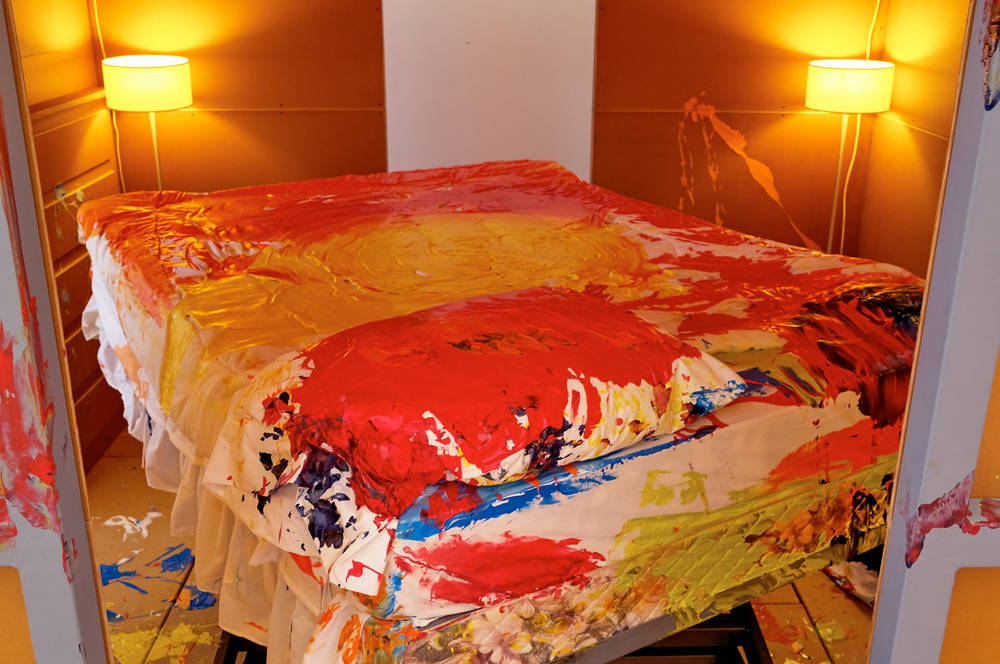Can art actually be funny? With satirical scenes and exaggerated characters, Richard Jackson uses classic strategies from comedy. And thereby tests the limits of art.
Glenn O’Brien, an icon of American art critics, once dealt a crushing blow to art and the art business, one laced with irony, deriding them as “funny” and saying that at the end of the day sculpture, painting, galleries, museums and collectors are all a joke. First and foremost, though, for him “art itself is a joke. And it’s not funny – just kidding. Art is really, really funny. It slays me. That’s what I like about it. It’s funnier than almost anything because it’s so serious.”
O’Brien puts things in a nutshell when he describes the, sometimes forced, seriousness of the art business as an attempt at compensation. After all, frankly, at first glance most art does look rather odd, particularly contemporary artworks. Now, the fact that it looks funny is not in itself a good reason to deny an object its status as art – but wanting to give it the benefit of the doubt we refrain from laughing – “Achieving a state of seriousness about an object (or a performance) could be seen as the most salient characteristic of the art-making process. If it is not done with seriousness and formality, how would we know it as art and not just another gag?”
Perhaps this is one of the reasons why art critics repeatedly engage in discussions about whether or not art is “allowed to be” funny. It must be said that there are a large number of artists who are not afraid of using humor to their own ends – just think about Paul McCarthy’s abstruse performance as a brilliantly eccentric artist “Painter”, Bruce Nauman’s puns and visual jokes in neon or Marcel Duchamp’s provocative urinal.
If it is not done with seriousness and formality, how would we know it as art and not just another gag?
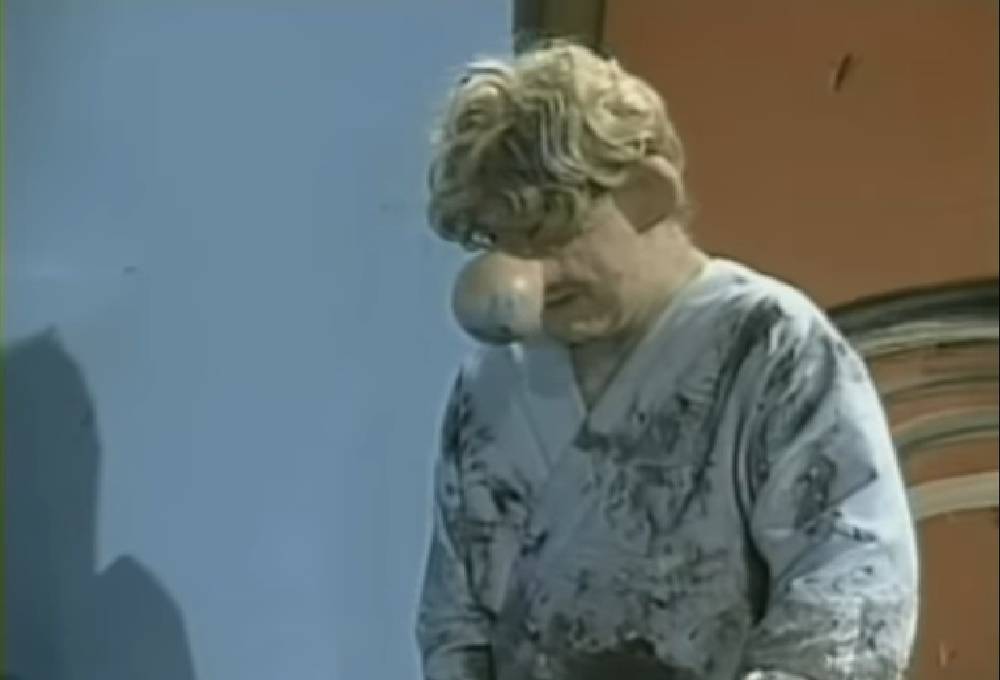
At this point, we could move seamlessly on to Richard Jackson, and not only because he was associated with the first two and influenced by the latter. From early on in his career, Richard Jackson’s work was characterized by a penchant for the absurd, a certain self-deprecation and a liking for puns. However, comedy in the true sense of the word possibly only came into play in his “Rooms”, painterly environments or installations dating from the early 2000s. For these rooms Jackson made up scenarios to form the starting point for artistic activities on his part.
Comedy in the real sense only came into play in Jackson’s “Rooms”
For example, for “Dining Room” Jackson imagines a family dinner situation which escalates when the father literally dumps his stress from work onto the table – in the form of paint squirting out of his backside. “Dad shares all the shit from work at the dinner table gripe gripe!” as it so fittingly says on a sketch. In “War Room” ducks in military uniform are distributed around a globe; they are blinded by pink breasts that gush from their eyes. As if in a juvenile pissing contest, they peed on one another with paint trickling from their bellies.
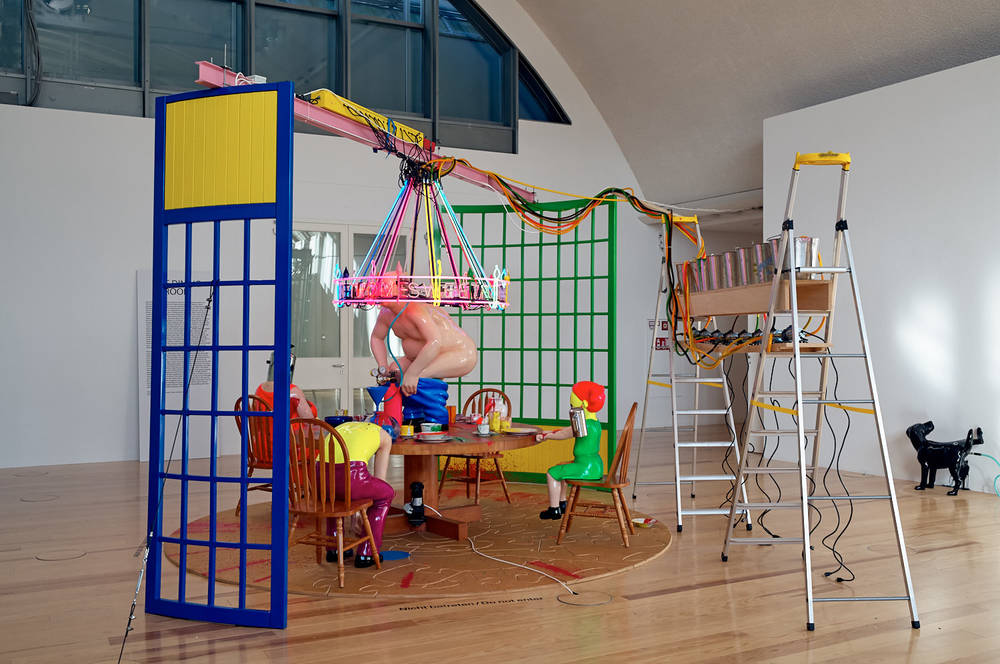
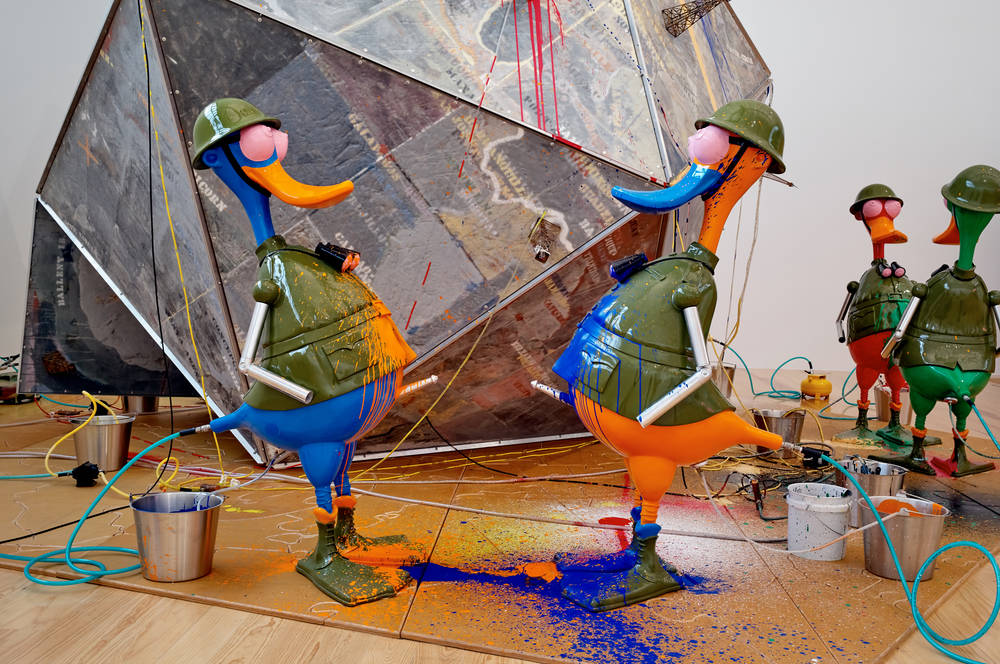
Should this make you laugh? You can laugh, but you don’t have to. Particularly if – touched in a rather uncomfortable way by the explicit scenes – the act of laughing tends to constitute a substitute activity, and then makes it worthwhile not to go straight on to the next work.
There is something comical about the double role that Jackson’s figures play
In the same way that a joke often unintentionally reveals a great deal about the society that spawned it, in Jackson’s work, too, more serious topics can be smuggled in through the back door of humor – the myth of the happy nuclear family, patriarchal structures, a penchant for voyeurism, the end of the private sphere, imperialism and the exploitation of the Earth we live on. At the same time, there is also something comical about the incongruous double role that Jackson’s figures are forced to play as crosses between men and machines. After all, in his installations Jackson does not squirt the paint himself but makes the protagonists of the scenes he creates into involuntary accomplices by simultaneously using them as painting machines. Paint is force-fed and pumped into their various orifices until it is forced to escape from somewhere else.
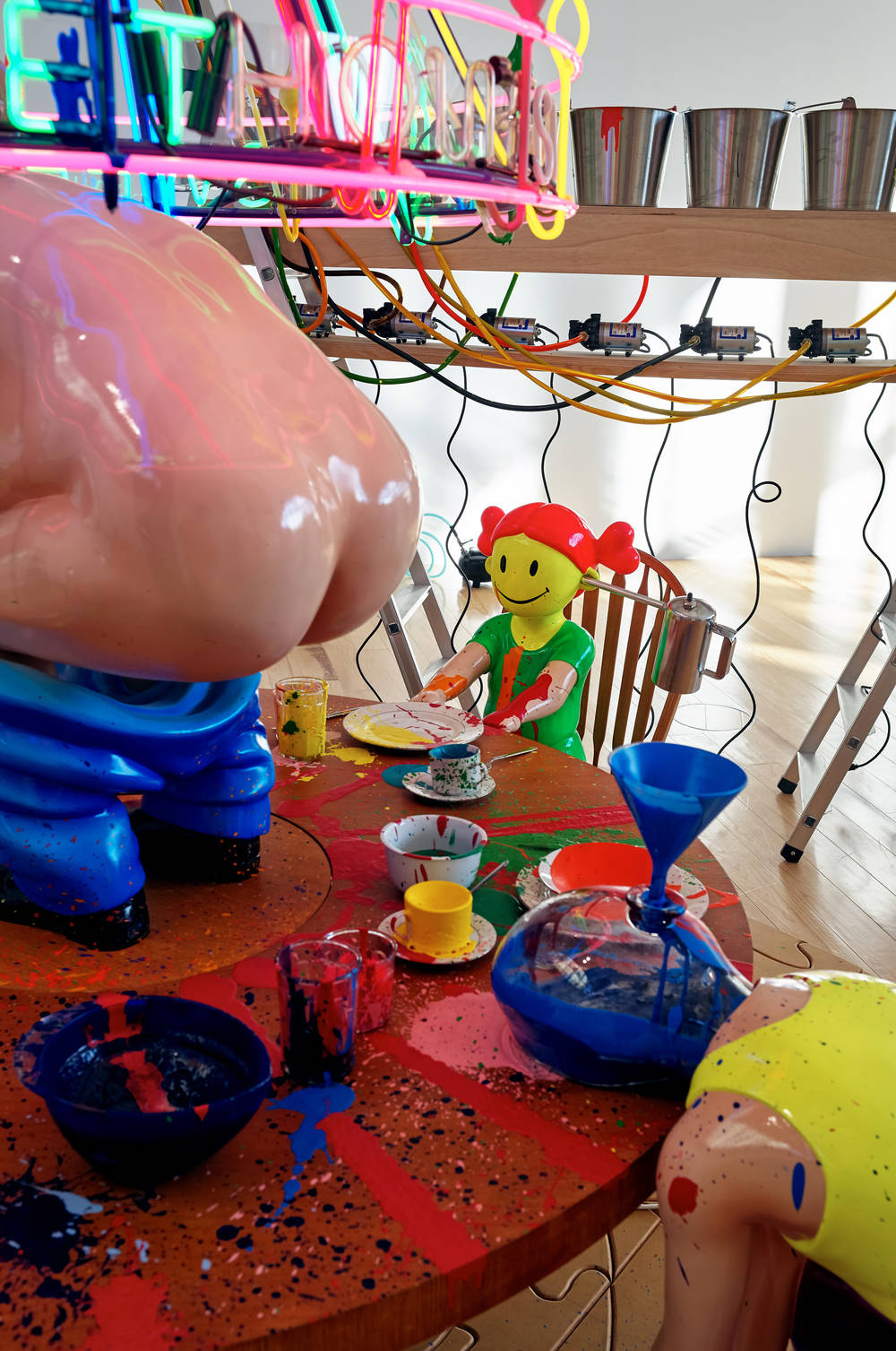
As philosopher Henri Bergson wrote in his essay on laughing back in 1900, laughter is a means of compensating for that moment when people involuntarily lose human quality and their behavior becomes mechanical or automatic – for example, when we sit down not on a chair but, accidentally, on something that is not there: “Any arrangement of acts and events is comic which gives us, in a single combination, the illusion of life and the distinct impression of a mechanical arrangement.”
Conversely, we laugh about animals or machines when we get the impression that they are behaving like human beings – this is something we like to attribute to animals – whereas it amuses us when machines fail in such situations (cf. the usual YouTube videos). Looking at Jackson’s figures it becomes clear that their humor does not result solely from the scenario in the relevant “room”. If we see them as representing human beings, their machine-like quality, something that the figures cannot help possessing, looks funny – but for machines, by contrast, their behavior is altogether human, imperfect and flawed, inappropriate for machines.
Any arrangement of acts and events is comic which gives us […] the illusion of life and the distinct impression of a mechanical arrangement.
There is another more profound way in which Jackson’s work is linked to the nature of jokes – that is overstepping the mark. Jokes are often based on instances of accepted social conventions or normative behavior being ignored; somebody does something (intentionally or unintentionally) which conflicts with what those present would expect of him or her. This discrepancy casts a significant light on Jackson’s description of his art as “unusual behavior”.
Jackson describes his own art as “unusual behavior”
Thus, for instance, he is testing institutional boundaries when he has a 12-meter dog pee yellow paint on the outside wall of a museum. But what principally characterizes this “unusual behavior” is the fact of permanently behaving badly. Jackson, the artist who would rather be constructing complex environments; Jackson, the sculptor, who insists on using paint like a painter; Jackson, the action painter who consciously denies his audience the performative aspect of his work – the activation of the painting machines – and only shows it the paint’s traces.

Richard Jackson, Bad Dog, 2013, Courtesy the artist, Image via curiator.com
Jackson certainly possesses humor but he is not a wisecracker. Humor is something that plays right into Jackson’s hand, so to speak, in that it is closely connected to that overstepping of the mark in terms of roles and expectations in his work. However, it is more than a mere end in itself. No, Jackson is deadly serious about painting, about his attempt to expand it and about investing his whole life in art. And that brings us back to O’Brien, only this time not ironically. There is also something poetical about being so very serious about something absurd.
